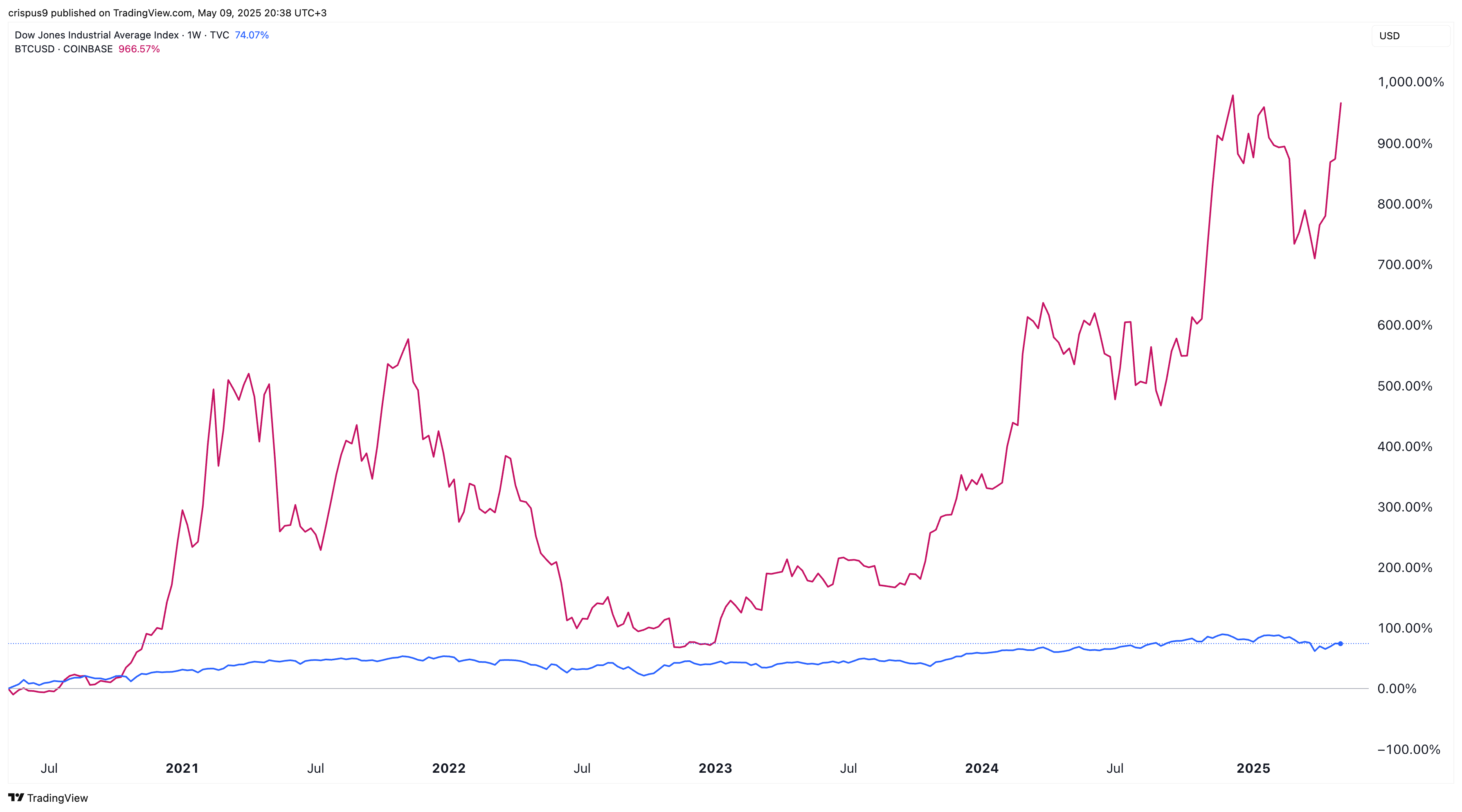Dow Jones vs Bitcoin: Which is the better buy in this bull market? 5 seconds ago
Bitcoin and US stocks jumped this week as a risk-on sentiment prevailed ahead of the US and China trade talks in Switzerland.
Bitcoin (BTC) surged to $104,000 for the first time in months, while the Dow Jones Index peaked at $41,360, its highest point since April 3.
There are signs that the stock and crypto markets are entering a bull market as trade risks fall and the odds of interest rate cuts rise.
Dow Jones vs Bitcoin: Why BTC wins
Bitcoin and the Dow Jones are significantly different assets. Established in 1896, the Dow is the oldest index in the United States, tracking 30 blue-chip companies across most sectors. Its top names include companies like NVIDIA, Microsoft, Walmart, and IBM. The index started trading at $40.94 and has surged by 92,800% since then.
On paper, the Dow Jones seems like a better investment since it holds some of the most well-known companies in the US. It is also considered a less volatile asset compared to Bitcoin and other cryptocurrencies.
However, in reality, Bitcoin has been a better investment than the Dow Jones and other top blue-chip indices like the S&P 500 and the Nasdaq 100. BTC has risen by over 10% this year, while the Dow is down 2.78%. The same trend holds since Bitcoin’s inception in 2009, as it has surged by 11.4 billion percent.
It has climbed nearly 1,000% in the last five years, while the Dow Jones has gained just 73% in the same period.

Why Bitcoin wins against stocks
Bitcoin outperforms the Dow Jones for several reasons. First, it has evolved into a store of value, which explains why many large holders don’t sell it. This characteristic comes from its fixed supply of 21 million coins and its halving cycles. That makes it a better option than the US dollar, which has an unlimited supply.
Second, Bitcoin experienced strong demand from retail investors for years, even as institutions remained on the sidelines. Now, institutions are leading the charge, with a company like Strategy controlling over 2% of Bitcoin’s total supply.
Firms like Coinbase, Tesla, Block, and Semler Scientific have all invested in Bitcoin, and some countries are considering adding it into their reserves. As a result, spot Bitcoin ETFs have had over $40 billion in inflows since January last year.
Further, unlike the Dow Jones, Bitcoin is becoming more scarce. Over 19.82 million coins have already been mined, and the supply on exchanges has dropped to a five-year low. As such, a combination of declining supply and rising demand is likely to push the price higher over the long term.
免責聲明:投資有風險,本文並非投資建議,以上內容不應被視為任何金融產品的購買或出售要約、建議或邀請,作者或其他用戶的任何相關討論、評論或帖子也不應被視為此類內容。本文僅供一般參考,不考慮您的個人投資目標、財務狀況或需求。TTM對信息的準確性和完整性不承擔任何責任或保證,投資者應自行研究並在投資前尋求專業建議。
熱議股票
- 1
- 2
- 3
- 4
- 5
- 6
- 7
- 8
- 9
- 10